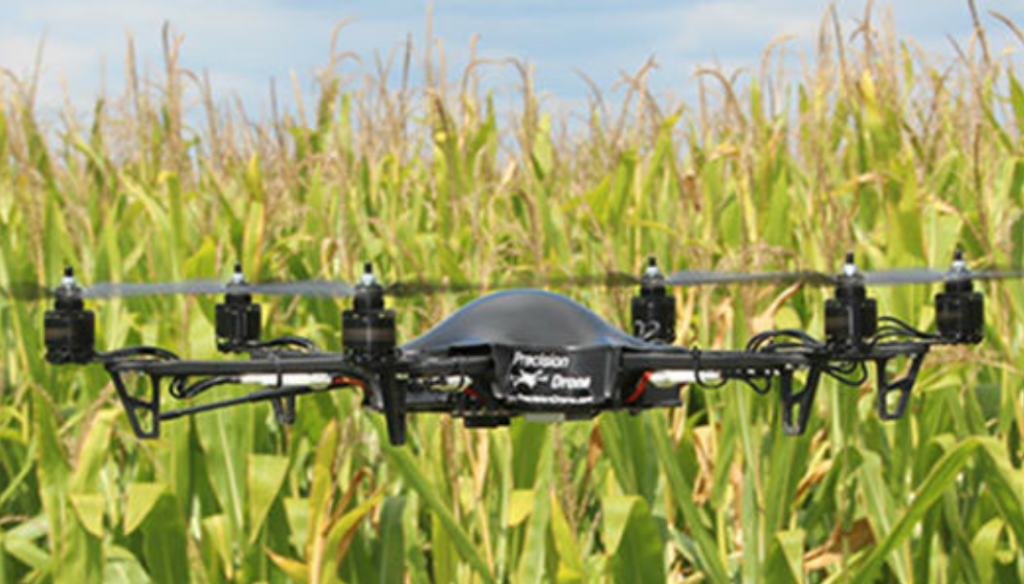Precision agriculture is a general term to describe farming tools based on observing, measuring, and responding to within-field variability via crop management. It is made possible through the use of Global Positioning System (or GPS satellites) or Global Navigation Satellite System (GNSS), which enable farm managers to respond to field irregularities. This approach allows farmers to make important resource management decisions both on-site and in real-time.

‘Precision Agriculture is also management strategy that gathers, processes and analyzes temporal, spatial and individual data and combines it with other information to support management decisions according to estimated variability for improved resource use efficiency, productivity, quality, profitability and sustainability of agricultural.
Precision agriculture with satellite farming refers to the use of GPS tracking systems and satellite imagery to monitor crop yields, soil levels, and weather patterns to increase efficiency on the farm. Precision technology is increasingly important as the issue of feeding 9 billion people by 2050 becomes more apparent. The technology was adopted in the early 1990s, and started with crop yield monitors. Now, there are tools such as weather analysis software and soil testing kits to monitor nitrogen and phosphorous levels.
Roughly half of the country’s large-scale row crop producers use tractor guidance. In contrast, small farms are largely not adopting tractor guidance technologies.
There is substantial room for increased adoption on small farms, which would potentially lead to economic and environmental savings because decreases in costs often lead to increases in profits. We have learned that on-farm efficiency is especially effective for these small-scale systems. Tractor guidance offers more spatially precise understanding of tractor operations, which lead to reduced operator fatigue, higher yield, and the ability to work longer workdays during inclement conditions. Altogether, these changes may significantly lessen a small farm’s fuel, labor, repair, and maintenance costs.

Companies participating in the precision agriculture market include agriculture equipment companies such as John Deere (DE), AGCO (AGCO), CNH Industrial (CNHI), and Kubota Corp. (KUBTY) and even drone company Aerovironment (AVAV). There are also the technology enablers that include GPS companies such as Trimble (TRMB) and the applied technology business at Raven Industries (RAVN) as well as the chip and sensor companies that range from NXP Semiconductors (NXPI) to STMicroelectronics (STM) that serve the “smart farming” market.
As a confluence of factors have raised concerns over the long-term future availability of food, venture investors have been pouring capital into agtech startups. In 2019 alone, they invested $2.8 billion into the space across the globe, a fourfold increase over 2015. According to the 2019 AgriFood Tech Investment Review, investment in digital technologies (which combines the independent sectors of imagery, precision agriculture and sensors and farm equipment) made up about 41% of 2019 deal activity.
arm Bots
Another promising technology for precision agriculture is robotics. From a small Rowbot designed to apply fertilizer precisely between rows of corn to a lettuce bot that pulls weeds, nimble robots are being developed to do the work traditionally done by hand or large machinery more efficiently. For instance, checking for pest problems in fields the conventional way can be a sticky situation, literally, as bug traps have to be manually monitored, cleaned and reset. In October, we profiled Spensa Technologies, a company that’s using robotics to streamline this cumbersome process. Spensa Technologies’s Z-Trap and an online tool called MyTraps.com are automated tools that allow farmers to track pests from their cellphones in real-time, allowing them to reduce the amount of pesticides sprayed on crops, which saves the farm money and labor. The company won $50,000 in the Village Capital VentureWell startup accelerator program, which Sustainable America helped to sponsor, to help develop the Z-Trap and more robotic agriculture tracking tools.
It remains to be seen if technologies like these can ease the race to feed a growing population, but a recent study conducted by Lux Research has shown that large (5,000 acre) farms using precision agriculture strategies can slash input costs $24.50 per acre on average and increase output gains by $42 per acre. Lux Research predicts that within 10 years, “precision agriculture will be an industry of fully developed platforms that cover the entire cultivation process.” If so, the result could be a food system with less waste, using fewer chemicals, functioning at lower cost. This can absolutely improve food availability, one of Sustainable America’s primary goals.
usda.gov
